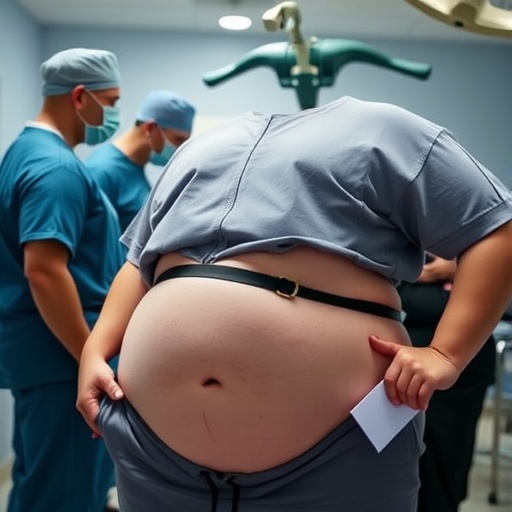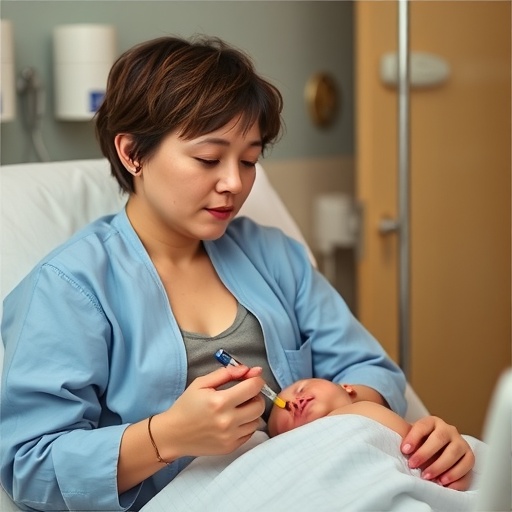
Few experiences invoke as much anxiety as a call from your doctor saying “you need to come back for more tests.” Your imagination goes wild and suddenly a routine medical screening becomes a minefield of potential life-threatening diseases.
It’s highly likely, however, that you have fallen victim to a false positive — a result that, despite the accuracy of the test, erroneously yields an affirmative result that points toward illness. Statistically, there’s usually not much cause for alarm. But tell that to the person who has to undergo additional blood draws, invasive tests or even therapies. While the result is false, the psychological toll is real, and so are the billions of dollars spent every year on tests and procedures performed as a result of false positives.
“There are these horror stories,” said UC Santa Barbara researcher Tracy Chuong. “Usually they go in for second opinions, get another test and it turns out to be a big scare. But it does cost the healthcare system quite a bit of money.”
To increase the accuracy of medical screening and reduce the incidence of false positives, Chuong, along with UCSB chemistry and biochemistry professors Martin Moskovits and Galen Stucky and Stanford chemical engineering professor Tom Soh, designed a biomedical assay that eliminates the readout of these faulty results. Not only does the assay provide greater accuracy, it reduces the wait time for results. It is an improvement on the popular enzyme-linked immunosorbent assay (ELISA), which detects concentrations of proteins that correlate with conditions from pregnancy to allergies, to infectious disease.
“We’re not trying to be the best assay,” said Chuong, referring to tests that can get results out of ever-more miniscule sample amounts. “Instead we looked at how we can make what’s already there work better, by reducing erroneous results.” Their research is published in the Proceedings of the National Academy of Sciences.
The mechanism of an ELISA basically works like this: Blood or other biological fluid is dropped onto plates with little wells whose surfaces bind antibodies and proteins. A second binder is added to these wells, which are tagged with “reporter molecules” that will activate (usually change color) if a target protein is detected. The test can vary in the number of steps and intermediate steps and their sequences, or in the types of detection molecules or enzymes, depending on the information being sought.
“What we realized was that in the process of doing this assay everything comes down to that one binder and the reporter,” Chuong said. If the reporter happens to bind to other surfaces, or other proteins, she said, it can indicate an abnormal concentration of target proteins that correlate with a disease. Other substances in the test sample may also prompt the reporter to activate.
“Then you suddenly have a false positive,” she said.
The procedure developed by the UCSB researchers looks more closely at the binding, and in effect labels all the parties involved in that step so that any erroneous activations of the reporter can be removed or disregarded, leaving only the true positives to be assessed.
“That’s the unique bit of our assay,” Chuong said.
Key to this technology are gold nanoparticles, infinitesimally tiny bits of gold whose electromagnetic properties enhance the chemical signature of whatever molecules happen to be close by.
“When we have these gold nanoparticles come together there are these interesting little electromagnetic fields that are generated within these gold surfaces when light hits,” Chuong said. The chemical signal of the labels next to the binder gets amplified by these nanoparticles, she explained.
“You can see everything within that binding spot,” she said, and the signals can be compared from one area of binding to another. Reactions that are not the ones being sought will not have the same signals as the true positives and can be weeded out in the analysis.
The assay — when compared against the performance of the conventional ELISA — has proved to be “up to clinical standards,” according to the researchers, with the added ability of removing the false positives, thereby eliminating the need for repeated testing.
Additionally, this assay can cut out several intermediate steps requiring washing and adding more reagents. The gold nanoparticles can make it possible to bind and label all the necessary proteins in about an hour.
“Theoretically a patient can just hang out for an hour and get their results, instead of waiting for the next day,” said Chuong.
Further research on this project aims to assess multiple targets.
“Doctors don’t rely on just one protein to make a conclusion, they look at a panel of proteins and their abundances to complete the picture,” Chuong said. “First, we’d like to show that multiple targets can be assessed, and the next step would be to look at them all at the same time.”
###
Media Contact
Sonia Fernandez
[email protected]
805-893-4765
@ucsantabarbara
http://www.ucsb.edu
http://www.news.ucsb.edu/2017/018236/good-gold




